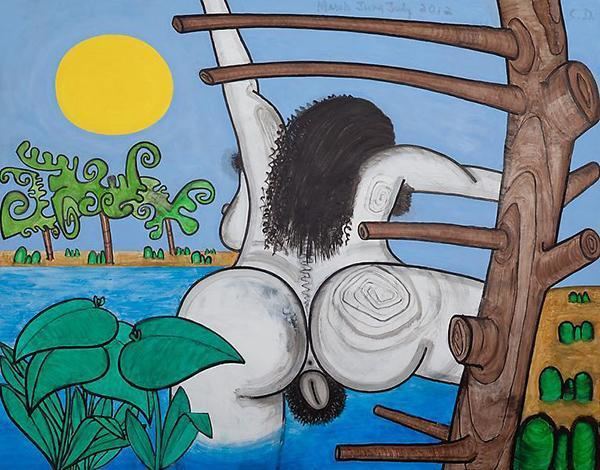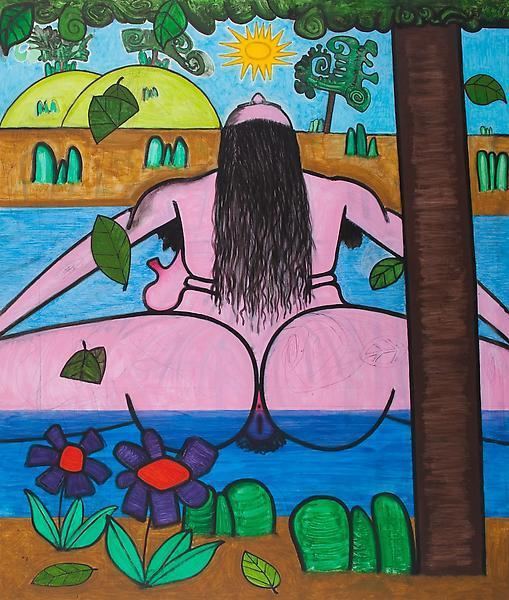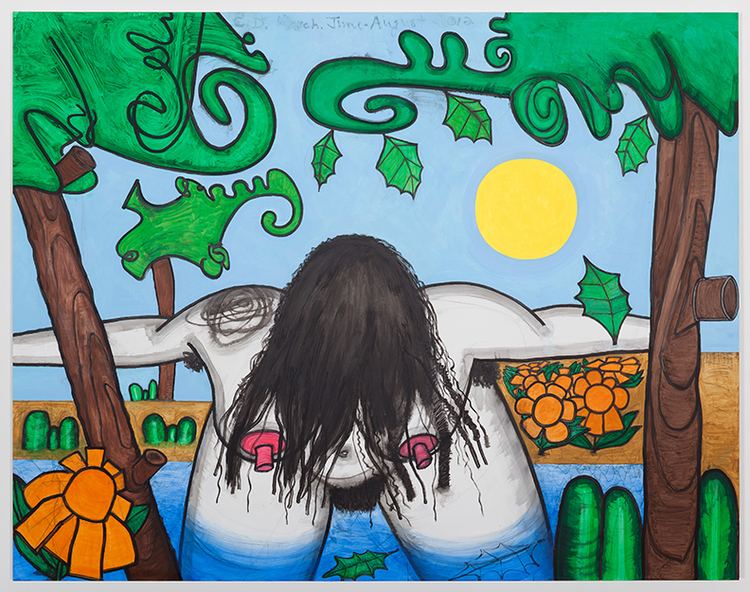Nationality American Role Painter Known for Artist, painter | Website www.carrolldunham.net Name Carroll Dunham | |
 | ||
Books Mamatoto: A Celebration of Birth, Sacred Landscape and Pilgrimage in Tibet: In Search of the Lost Kingdom of Bon Awards Guggenheim Fellowship for Creative Arts, US & Canada Similar People Laurie Simmons, Lena Dunham, Grace Dunham, Charles Ramble, Bob Nickas | ||
Children Lena Dunham, Grace Dunham | ||
Carroll dunham at gladstone gallery
Carroll J Dunham (born November 5, 1949) is an American painter who lives and works in New York and Connecticut. Working since the late 1970s, Dunham’s career reached critical renown in the 1980s when he first exhibited with Baskerville + Watson, a decade during which many artists returned to painting. He is known for his conceptual approach to painting and drawing and his interest in exploring the relationship between abstraction and figuration.
Contents
- Carroll dunham at gladstone gallery
- Painting process process painting moma carroll dunham 1
- Early life
- Work
- Exhibitions and collections
- Galleries
- Definition of painting
- Personal life
- Works and publications
- References

Of his body of work, Johanna Burton writes, "Dunham’s career can be characterized by its rigorous indefinability, as his works dip freely into the realms of abstraction, figuration, surrealism, graffiti, pop, even cartoons, without ever settling loyally into any one of them." David Pagel, in a Los Angeles Times review intended to be complimentary, described his paintings as "vulgar beyond belief..."

Painting process process painting moma carroll dunham 1
Early life

Dunham was born in New Haven, Connecticut, the son of Carol Marguerite Dunham (née Reynolds) and Carroll Dunham IV. He grew up in Old Lyme, Connecticut.

In 1972, Dunham received his BA from Trinity College in Connecticut.
Work
Between 1981 and 1987, Dunham worked directly on wood veneer, employing multiple types of plywood and various, ever more exotic veneers, including elm, oak, pine, and rosewood. Often responding to the natural grains of the wood, Dunham created vibrant compositions that frequently combine geometric and organic, anthropomorphic forms. In discussing this body of work, Ken Johnson writes, "What these paintings add up to is a kind of delirious, barely contained psychic pluralism. Various dualities and contradictions play out: between wood and pain; abstraction and representation; geometry and biology; the phallic and the vaginal; body and mind; nature and culture."
Towards the late 1980s, Dunham began to work with more singular motifs. Among the recurring figures in his work are wave-like forms, hatted male figures in a variety of settings, trees set in pastoral landscapes, and nude female bathers. Kate Linker writes,
These motifs have provided an armature for a continuous and seemingly self-generating practice in which paintings appear to evolve and differentiate from earlier versions of themselves. Imagery is generated through subject matter yet abstractly, in a series of variations that incrementally expand on and work through a theme.
Dunham has said of his use of various subjects in his practice, "… all these subjects are really just things that let you make paintings." Further to this point, Linker notes, "the figure is deployed as an iconic tool around which a space is built in accordance with the demands of the flat rectilinearity of the picture plane."
Exhibitions and collections
Dunham has been the subject of numerous one-person exhibitions, including a mid-career retrospective at the New Museum in New York and an exhibition of paintings and sculptures at Millesgården in Stockholm. His work has been included in several Whitney Biennials and in "Disparaties and Deformations: Our Grotesque," SITE Santa Fe’s fifth biennial curated by Robert Storr. He has participated in exhibitions at major institutions such as the Museum of Modern Art, New York; Musée d’Art Moderne de la Ville de Paris; and the Museo Nacional Centro de Arte Reina Sofía, Madrid.
His work is included in a number of public collections, including the Art Institute of Chicago, Chicago; Astrup Fearnley Museum of Modern Art, Oslo; Brooklyn Museum, New York; Museum Ludwig, Cologne; Museum of Modern Art, New York; Museum of Contemporary Art, Los Angeles; Philadelphia Museum of Art, Philadelphia; Tate Gallery, London; Walker Art Center, Minneapolis; and Whitney Museum of Art, New York.
Galleries
Dunham is represented by Gladstone Gallery, New York; Blum & Poe, Los Angeles; Skarstedt Fine Art, New York; Gerhardsen Gerner, Berlin/Oslo; and Galerie Eva Presenhuber, Zurich
Definition of painting
In a joint-talk given at MoMA with the painter Chuck Close, Carroll Dunham provided the following definition of painting, managing to summarize a fairly sweeping range of issues related to the discipline in the space of two consecutive compound sentences:
Painting is a relatively recently manifestation of humanity’s ancient effort to understand and exploit pictorial space generally understood to consist of sheets of colored paste spread manually across primarily rectilinear planar supports embodying illusionistic or quasi-narrative properties although each of the previous characteristics have been challenged and contradicted to great theoretical and expressive effect without the loss of basic categorical integrity testimony to paintings nature as both bounded and infinite and its ability to absorb apparently conflicting attitudes on the part of its creators.
Painting operates at the nexus of intersubjective experience and consensual reality relying on both for its subject matter while remaining stubbornly self-referential, and its content extends into the areas we call psychological social, material (in both the philosophical and economic senses of the word) and—for the lack of a better term—spiritual giving it unusual utility as a tool for studying the evolution of the self of socio-cultural systems and of the complex reciprocities between the two, strikingly manifest within the apparent disconnect within paintings dual nature as a repository of capital and a facilitator of profound contemplation, a perfect storm of the crass, the sacred and the intimately personal.
Personal life
Dunham lives and works in New York City and Cornwall, Connecticut with his wife, the artist Laurie Simmons, with whom he has two daughters, actress and writer Lena and writer/activist Grace.
